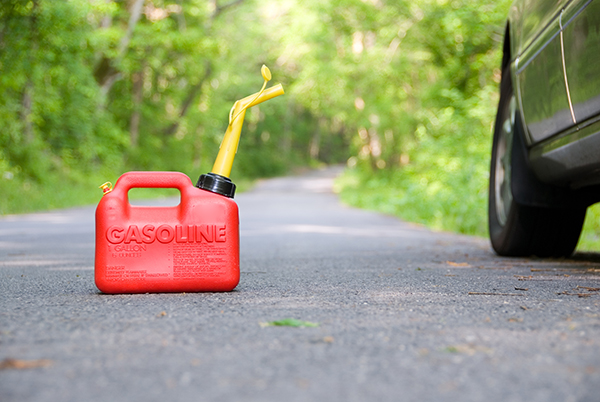
Advertisement
In most cases, running low on gas is a minor inconvenience. You’ll be hard-pressed to find a long stretch of road without a gas station somewhere along the way to keep you topped off. If do you run out of gas in the middle of nowhere, you can even call for roadside assistance to bring the fuel right to you. However, these services might not be available when disaster strikes. Therefore, learning how to siphon your own gas can be an invaluable survival skill when SHTF. (h/t to AskAPrepper.com)
Tips on siphoning gas
An important thing to remember is that modern-day siphoning involving newer car models might be difficult for the inexperienced. Many of them have an anti-rollover valve on all gas tank openings, which also acts as a siphon prevention system. This makes nearly all the siphoning devices and pumps useless without damaging the vehicle. While there are techniques you can do to prevent damage done to the car, there are plenty of other ways to get yourself a good supply of gasoline through siphoning. Here are a few methods you can use. (Related: Prepping hacks: 3 Tried-and-true ways to siphon gas from a car.)
Doing it the old-fashioned way
Siphoning back in the day was a much simpler task than it is now. All you must do is shove one end of a hose down a gas tank and suck the gas out on the other end. However, this method can be dangerous as you must get a mouthful of gas before you stick the other end into a gas canister. You’ll also be inhaling a lot of gasoline fumes, which are dangerous for your health.
An alternative method is to use a significantly longer hose; feeding large portions of the hose into the tank before capping it with your thumb. If things go your way, the hose will be filled with water, which will help siphon out gasoline once you put the other end into a gas canister. While the method isn’t the most reliable one, it is one of the easiest to perform on older vehicles.
A safer alternative
If you want a safer way to siphon gasoline from older cars, you can use two hoses instead of one – a main hose and a short hose, which is thinner. The main hose is placed into the filler neck of the gas tank, not unlike the previous entry. However, once the main hose is inserted, the second one should also be inserted into the neck just far enough so it won’t fall out the other end. Afterward, fill the opening with a plastic grocery sack or rag to prevent air from passing through before putting the end of the main hose into a gas can.
Once that’s set up, you should start blowing into the smaller hose. This creates air pressure that forces the gas upward through the main hose and out into the gas can.
Let the vehicle do the work
If the old-fashioned way won’t work, the next best thing is to let the vehicle pump out the gas for you. However, the vehicle’s built-in fuel pump only stays on for about three seconds before turning off; which won’t give you a lot of gas. However, you can trick the pump to stay on for longer periods.
The first step is to divert the gas that the vehicle pumps out. Most modern cars don’t have carburetors. Instead, they use something called a fuel injection, wherein a small valve sprays gasoline into a cylinder through a tube called the fuel rail. Once you’ve located the fuel rail (or rails in a 6 or 8 cylinder engine), remove the cap at the end and attach a piece of hose right over the threads for the cap. If the hose doesn’t fit tightly, clamp it down using a dedicated hose clamp or other means to keep it secure.
The next step is tricking the fuel pump into staying on for longer than three seconds. This step involves removing the fuel pump relay, which is found in the engine compartment. Once the relay is out of the socket, you can jumper across contacts 3 and 5 using any kind of wire, pushing down the ends into the slots in the socket. Once that’s installed, turn on the ignition key to get the pump running.
If you don’t have a key to turn the pump on, you can use a wire to jumper power from a car battery to either contact 3 or 5 of the fuel pump relay.
No engine access? No problem
In case the engine won’t work at all, or you don’t have access to it, you can search underneath the car for the fuel filter and the wires that lead up to the fuel pump. Start by removing the fuel filter by taking out the hose clamps. Once that’s taken care of, you can attach a hose to the line coming from the back of the vehicle and use a hose clamp to keep it all secure. Afterward, cut the wire that provides power to the fuel pump and attach your own wire. Connect these wires to the vehicles battery to start the pump.
An alternative to this method is to simply remove the entire fuel tank from the vehicle. Most of the time, these fuel tanks are held secure with two straps. All you need to do is remove them to lower the tank to the ground. However, consider using a floor jack before removing the straps to prevent the tank from slamming the ground, After that, you’ll need to disconnect the filler neck and fuel lines. This method would leave the entire tank ready for scavenging.
If you plan on bugging-out in your vehicle, learning how to siphon gas can be a life-saver if you don’t have any spare fuel. Read more about essential survival skills while on the road at BugOut.news.
Sources include:
Advertisement
Advertisements
















